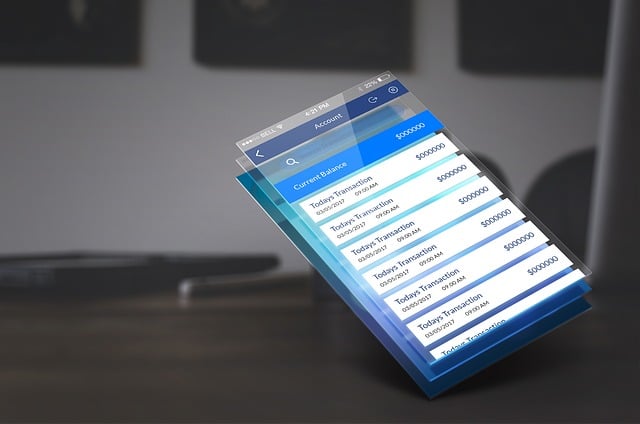TL;DR:
User-Centered Design (UCD) is paramount in web and mobile app development, ensuring intuitive, accessible, and tailored user experiences. Through user research, usability testing, and iterative design, designers craft interfaces that resonate with target audiences. Visual hierarchy, established through size, color, contrast, spacing, and layout, guides users' attention to critical content, enhancing usability and reducing cognitive load. Color theory, typography, and intuitive navigation are key elements for creating engaging digital experiences. Accessibility is a fundamental requirement, adhering to WCAG guidelines for seamless interaction among diverse users. Future trends in UI/UX design include minimalism, voice user interfaces (VUIs), personalization, and inclusive design principles.
“Unveiling the art and science behind exceptional user experiences, this comprehensive guide explores the core principles of UI design. From defining the fundamental concepts to delving into the latest trends, we navigate the intricate world of web and mobile UI/UX design.
Discover how user-centered design creates intuitive interfaces, visual hierarchies enhance usability, and color, typography, and navigation interplay to captivate users. Additionally, gain insights into making digital spaces accessible and explore emerging trends shaping the future of UI design.”
Understanding UI Design: Definition and Key Principles

The Role of User-Centered Design in Web and Mobile Apps

In the realm of web and mobile app development, User-Centered Design (UCD) serves as a cornerstone for crafting exceptional user experiences. This approach places the user at the heart of every design decision, ensuring that apps are intuitive, accessible, and tailored to individual needs. By employing methods like user research, usability testing, and iterative design, UI designers can create interfaces that resonate with their target audience.
UCD fosters a deep understanding of user behaviors, preferences, and pain points, translating into more engaging and efficient app experiences. It promotes the creation of intuitive navigation, clear information architecture, and visually appealing layouts that enhance user satisfaction and interaction. This strategy is pivotal in today’s digital landscape, where competitive markets demand apps that not only function well but also offer seamless and personalized interactions through effective UI design.
Creating Effective Visual Hierarchies for Enhanced Usability

In UI design, establishing a clear visual hierarchy is paramount for enhancing usability and user satisfaction. Visual hierarchy refers to the organization of elements on a screen, guiding users’ focus and attention to the most important content first. Through strategic use of size, color, contrast, spacing, and layout, designers can create a natural flow that enables users to quickly understand and navigate through interfaces. For instance, larger and bolder text for headings, coupled with contrasting colors for links or call-to-action buttons, ensures that critical information stands out, making it easier for users to locate and act upon.
Effective visual hierarchies also facilitate user interaction by reducing cognitive load. By prioritizing content and functionality, users can effortlessly find what they’re looking for, whether on a website or mobile app. This results in improved usability, reduced frustration, and higher conversion rates. In the context of UI design, understanding and implementing these principles are key to creating intuitive, engaging, and ultimately successful digital experiences.
Color Theory and Its Impact on Interface Aesthetics

Color theory is a fundamental aspect of UI design, as it significantly influences the aesthetic appeal and user experience of digital interfaces. The choice of colors can evoke emotions, guide user interactions, and enhance readability, all of which contribute to an intuitive and engaging UI. By understanding color harmony, contrast, and psychological effects, designers can create visually pleasing layouts that resonate with users.
In UI design, the right color palette can make or break a user’s perception of an application. Warm tones may evoke a sense of energy and friendliness, while cool hues can instill calmness and professionalism. Effective use of colors helps establish visual hierarchy, emphasizing important elements and improving overall usability. This careful consideration of color theory ensures that interfaces are not only aesthetically pleasing but also functional, catering to users’ intuitive understanding of visual cues.
Typography Choices for Engaging User Experiences

In the realm of UI design, typography plays a pivotal role in shaping user experiences. The choice of fonts and text styles isn’t merely aesthetic; it significantly influences how users interact with digital interfaces. For instance, using legible and well-spaced typefaces ensures content readability, enhancing user engagement. Incorporating appropriate font weights and sizes can also guide users’ attention to key elements, making navigation intuitive.
Considerable thought should be given to aligning typography choices with the brand identity and target audience. Consistently applying style guidelines across various UI components creates a cohesive user experience. Additionally, leveraging whitespace effectively around text allows for better visual hierarchy, making interfaces cleaner and more inviting. This strategic approach to typography not only captivates users but also facilitates seamless interaction in both web and mobile UI design contexts.
Designing Intuitive Navigation Systems for Seamless User Journeys

Intuitive navigation is a cornerstone of successful UI design, ensuring users can effortlessly traverse digital spaces. A well-designed navigation system creates a seamless user journey, guiding individuals through various pages and features with minimal confusion. By understanding user behavior and leveraging patterns that are familiar and intuitive, designers can build interfaces that foster efficiency and engagement.
Key elements in crafting such systems include clear labeling, hierarchical structures, and consistent placement. Each page or screen should have a distinct yet complementary role within the larger interface, allowing users to predict where to find specific functionalities. This predictability reduces cognitive load, enabling users to focus on tasks rather than navigating complexities. Consistent design language further reinforces these intuitions, creating a cohesive experience across different sections of the web or mobile application.
Accessibility Considerations: Making Interfaces Inclusive

In modern web and mobile UI/UX design, accessibility considerations are no longer a nice-to-have, but an absolute necessity. Designing inclusive interfaces ensures that users with disabilities can navigate and interact with digital products seamlessly. This involves implementing features like keyboard navigation, alt text for images, and sufficient color contrast to accommodate visually impaired users. Additionally, designing for screen readers and providing options for text resizability benefits all users, including those with reading difficulties or aging eyes.
UI design that prioritizes accessibility enhances user experience for everyone. By adhering to guidelines such as WCAG (Web Content Accessibility Guidelines), designers can create interfaces that are not only compliant but also delightful to use. This includes thoughtful considerations like proper labeling, predictable interactions, and clear feedback mechanisms, ensuring that users with diverse abilities can engage with digital content effectively.
The Future of UI/UX Design Trends to Watch

The future of UI/UX design is brimming with exciting trends that promise to enhance user experiences and elevate digital interactions. One prominent trend is the continued rise of minimalism, where clean lines, simple interfaces, and uncluttered layouts dominate. This aesthetic not only improves usability but also makes designs more accessible and aesthetically pleasing. Additionally, the integration of voice user interfaces (VUIs) is on the rise, as natural language processing advances, enabling users to interact with applications hands-free.
Another notable trend is the focus on personalized experiences. AI and machine learning are being leveraged to create dynamic UIs that adapt to individual user preferences and behaviors. This includes personalized content delivery, tailored navigation, and adaptive interfaces that evolve over time. Furthermore, accessibility becomes increasingly important, with designers prioritizing inclusive design principles to ensure that digital products can be used by everyone, regardless of abilities or limitations.
